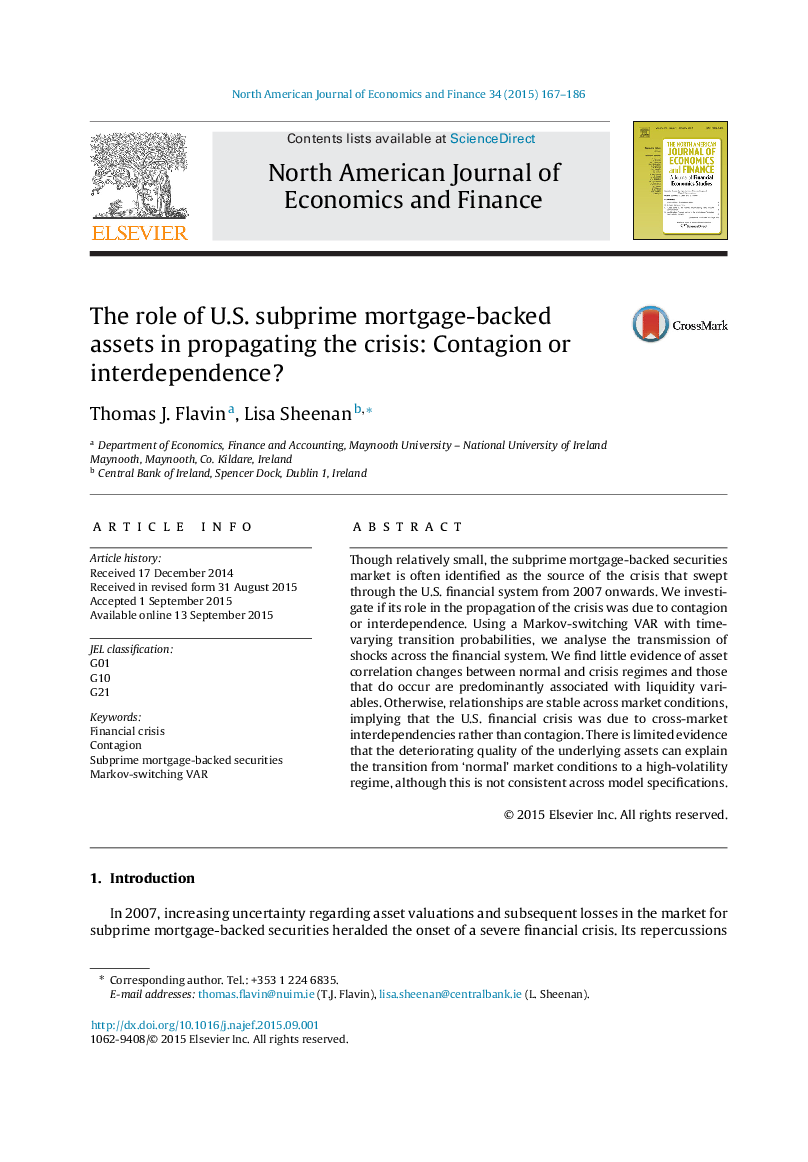| Article ID | Journal | Published Year | Pages | File Type |
|---|---|---|---|---|
| 972599 | The North American Journal of Economics and Finance | 2015 | 20 Pages |
•We analyse the role of contagion in the spread of the subprime crisis across markets.•There is evidence that the subprime shock caused the transition to the crisis state.•There is little evidence of correlation-based contagion from (or to) subprime assets.•Unstable market relationships across regimes are mainly due to liquidity variables.•Interdependence, rather than contagion, appears to explain the U.S. financial turmoil.
Though relatively small, the subprime mortgage-backed securities market is often identified as the source of the crisis that swept through the U.S. financial system from 2007 onwards. We investigate if its role in the propagation of the crisis was due to contagion or interdependence. Using a Markov-switching VAR with time-varying transition probabilities, we analyse the transmission of shocks across the financial system. We find little evidence of asset correlation changes between normal and crisis regimes and those that do occur are predominantly associated with liquidity variables. Otherwise, relationships are stable across market conditions, implying that the U.S. financial crisis was due to cross-market interdependencies rather than contagion. There is limited evidence that the deteriorating quality of the underlying assets can explain the transition from ‘normal’ market conditions to a high-volatility regime, although this is not consistent across model specifications.
